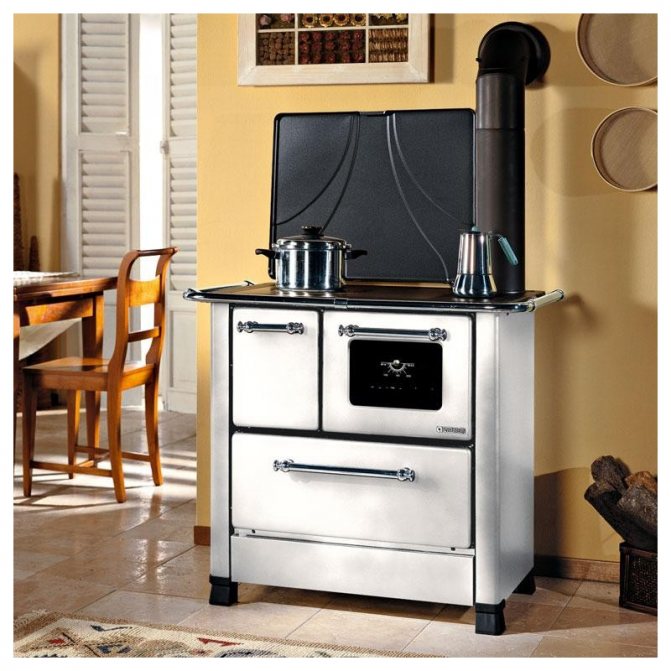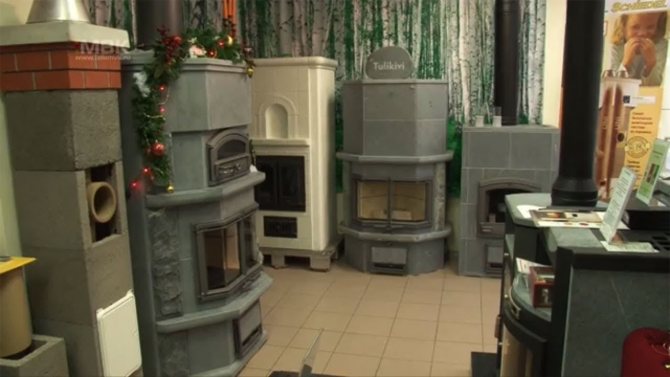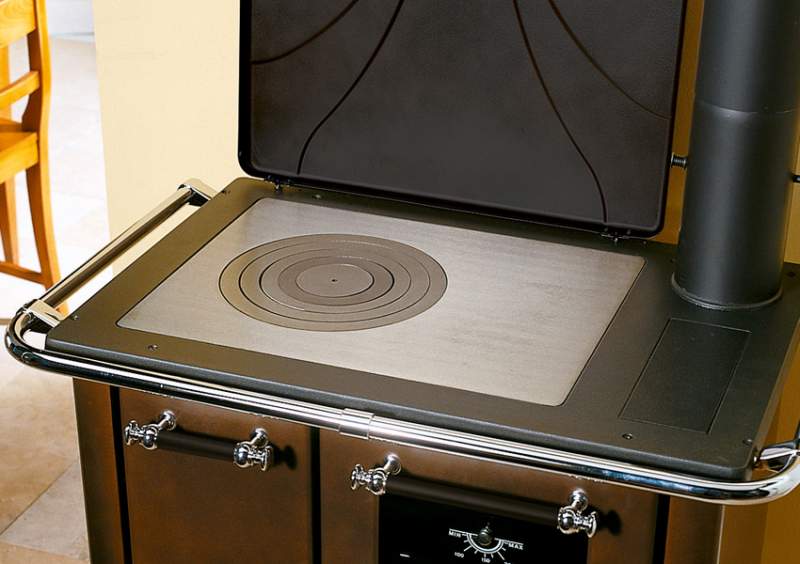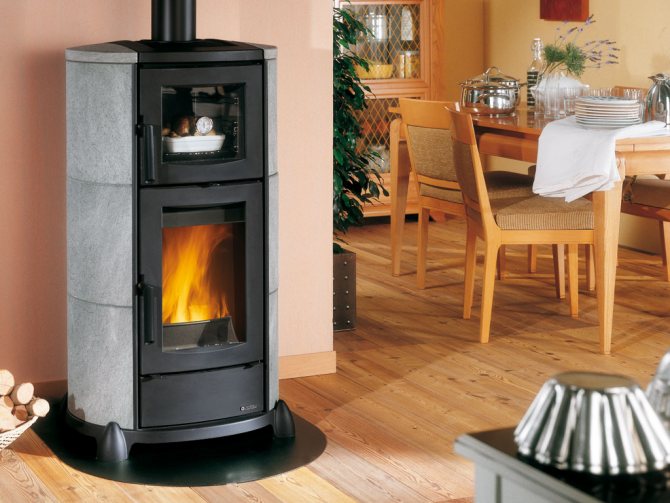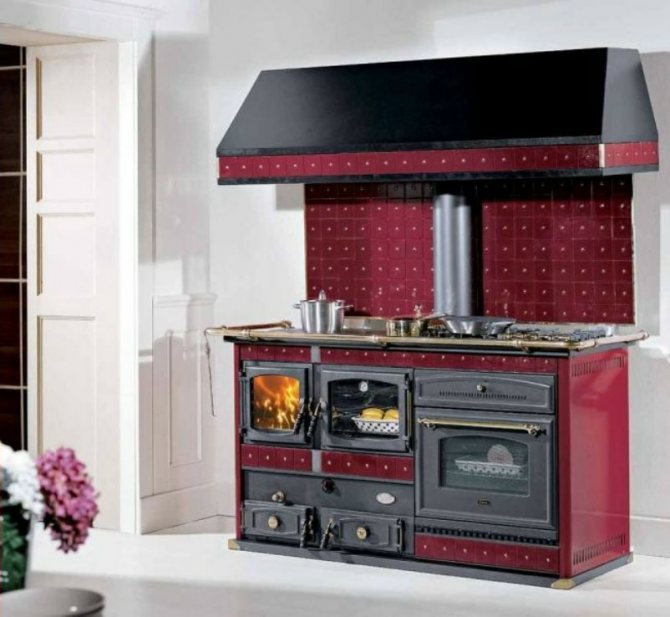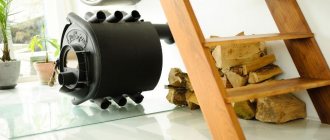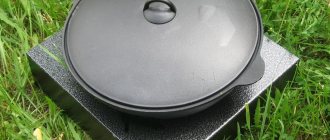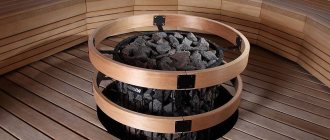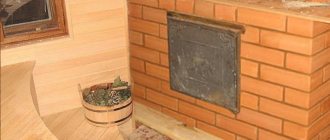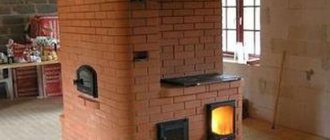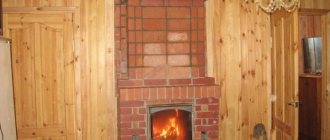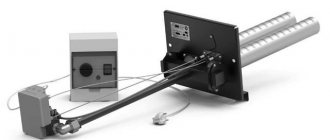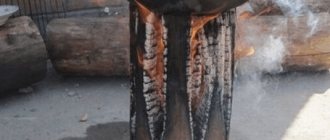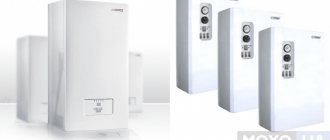Cooking techniques
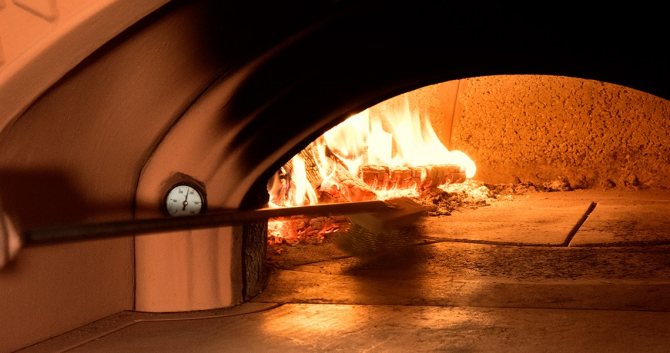
Open fire
With this technique, the dish is cooked at a maximum temperature close to 450 ° C. This temperature is ideal for preparing real Italian pizza, some types of bread, snacks, and meals that can be cooked in a few minutes. At this temperature, the pizza is placed directly on itself under the Oven and cooks in less than 90 seconds, the heat from the Oven hearth completely bakes the bottom crust, and the heat reflected from the Oven dome reaches the pizza, baking it on top, so that the sauce and cheese melt to an amazing color and absorb rich aroma. Open fire is the best option for the browning and caramelization process compared to other methods, which we will talk about below.
Following the lighting instructions above, bring the internal temperature to 450 ° C until the Oven dome is fully lightened, and then allow the temperature to drop slightly and maintain it at 400 ° C.
- Move the fire to one side of the Furnace, making sure the flame is active and reaching the dome of the Furnace;
- Be careful when working with high temperatures;
- Place the pizza or other dish on the underneath directly next to the fire, and remember to constantly rotate the dish relative to the fire;
- Add wood every 15-20 minutes to keep the fire going;
- If you plan to cook for a long period of time, it is recommended to move the burning coals to the other side of the hearth to ensure even heating;
Roasting
Similar to the capabilities of a conventional convection oven, but much better. This technique is versatile. It can be used to lightly pre-fry the crust of meat products, to give an appetizing golden color, with this technique all the juices remain inside the meat and it turns out to be very tender and juicy.
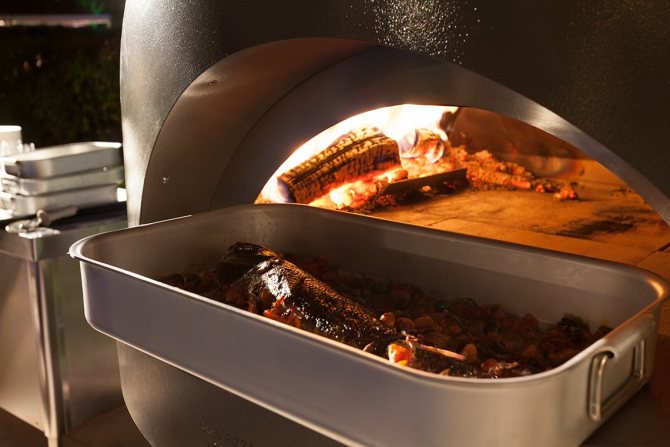

After the Oven has warmed up to the maximum temperature, you can first brown or lightly fry the top of the dish (for example, for some casseroles, when you need the filling to remain juicy), at such a high temperature, the process of caramelization of meat and vegetable dishes is excellent. Ordinary convection ovens will never allow you to cook using this technique. Then wait until the Oven has reached the required roasting temperature of 200 ° -300 ° C. When cooking poultry, it is recommended to first fry the dish in foil, and remove the foil a few minutes before the end of cooking to form a golden crust.
- By following the "Rules for ignition" above, ensure that the optimum temperature is 450 ° C. Keep the temperature high for a while to create a crust on top, then cover or pour over the sauce and keep the temperature at 200 ° C.
- Move the heat and coals to one side and keep the fire going by adding small chips every 15 to 20 minutes. The roasting technique is largely due to the radiation of heat from the coals, and not from the flame itself.
- Temperature variation within the range of 300 ° C - 200 ° C is allowed, let the flame go out a little, but do not let it go out completely.
- With this technique, it is allowed to leave the door open (for frying less than an hour), for longer frying, the door can be closed, while not forgetting to periodically turn the cooking dish.
Naturally, the closer you place the dish to the fire, the higher the temperature becomes, and accordingly the farther from the fire you place the dish, the lower the temperature.Make it a rule to periodically check the dish in order to correctly determine the required heat intensity - increase / decrease accordingly.
Grilling and barbecue techniques
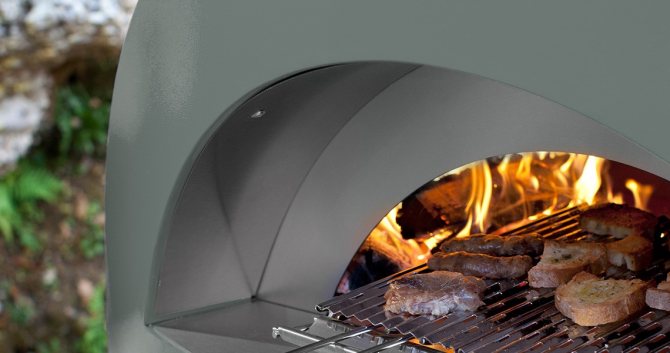

This technique works great in cases where you want to seal the flavor inside the food, neutralize excess fat, for a crispy crust, but still keep the food very juicy on the inside. Use the special grill grate from our set to create the characteristic dark stripes of your barbecue steaks.
- Use the Firing Regulations above to reach 450 ° C, then allow the oven temperature to drop to 300 ° C
- Move the burning coals to the left or right side of the hearth.
- Then place the grill in the Oven, wait a little until the grill is thoroughly warmed up and then place the food on it.
- Prepare a gourmet barbecue in just a few minutes.
Bakery products
To obtain aromatic delicacies such as bread, all kinds of desserts, pasta, vegetable side dishes and much more, baking technique is the best choice.
- Use the “Firing Rules” above to maintain a temperature of 450 ° C, spread the hot coals over the hearth for a while to allow the heat to penetrate under the Stoves.
- Wait until the temperature has dropped to the desired baking temperature, with only glowing coals in the oven without a flame, make sure that the laser thermometer shows a temperature in the range of 160-200 ° C. Then you can move the coals to one of the sides of the Furnace.
- Place baked goods directly on the floor. You can use a special terracotta baking dish to help insulate the baked goods and provide a "softer heat" throughout the cooking time.
- Cover the mouth with the door and continue baking as the temperature gradually decreases.
Bread
The wood-fired oven is an excellent device for baking delicious and fluffy bread. We recommend adding steam for a crispy crust. Ideal
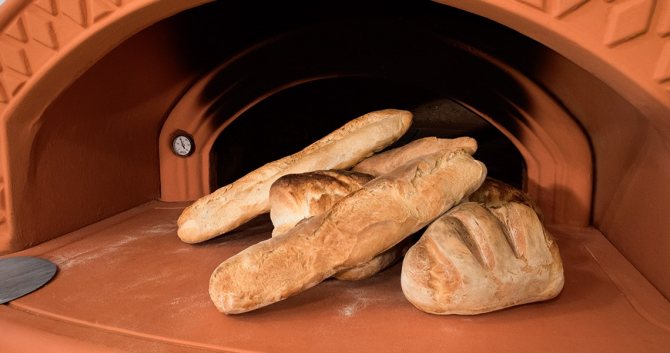

is the temperature 100 ° C - 180 ° C. The best time to bake bread is when you have finished preparing the main dishes and all the coals can be removed from the Oven, and then the bread will be baked during the natural drop in temperature.
- Heat the Stove to 450 ° C and then spread the coals over the surface of the hearth. It is recommended to heat the Oven properly so that as much heat as possible builds up inside.
- Bread can be baked, like pizza, directly on the hearth itself, or you can use a baking tray. For the first 2-3 minutes, the door must be kept closed so that the crust of bread grabs and turns out to be crispy. Rotate the bread periodically.
You can find out the readiness of the bread by focusing on the color and temperature. Press lightly on the center of the loaf of bread, if it turns out to be soft and, as it were, hollow inside, then the bread is ready, if the loaf is slightly dense, then it takes some more time to cook. Be careful with the temperature, the higher the temperature, the crust takes on color faster, although the inside may still be moist. In this case, it is better to use slow baking.
* To obtain a crispy crust, we recommend using water vapor: to achieve the desired effect, it is enough to spray the surface of the bread blank from the spray bottle and / or "puff" it onto the center of the dome at the moment of planting the bread; or place 1-2 ice cubes in a separate container next to the bread. Steam should be created only in the first 10-15 minutes of baking.
Outdoor stove designs
Not just a stove
The simplest outdoor stove is a 2-burner stove with a tunnel firebox, divided by a smoke tooth into a flame (firebox itself) and smoke chambers, diagram on the left in the figure:


Diagram of an outdoor stove with a smoke tooth and smoked to it
Household stoves with a smoke tooth are not made: it reduces the efficiency of the stove and increases the danger of carbon monoxide emission. However, for a summer street stove, both are unimportant, but the smoke tooth is in its firebox:
- Reduces the dependence of the furnace mode on the direction and strength of the wind;
- Allows you to load low-calorie waste fuel into the furnace;
- Allows you to heat water on a small burner in the wind and cold and cook the first course in a tall dish, because at the pass over the jib, a high temperature develops from the flame chamber to the smoke chamber and a large amount of heat is released;
- It makes it possible, at a certain furnace mode (see below), to start the oven with a smokehouse, in this case the smoke chamber works as an afterburner of the smoke generator.
Smoke tooth in a street oven
The height of the passage between the top of the jib and the hob forming the hob is usually approx. 70 mm. However, the goose needs to be set up, which is not difficult: it is laid out in a finished oven made of bricks (you may not be hanged) without dressing and even dry. Depending on the ratio of the dimensions of the furnace, the diameter and height of the chimney, the optimal clearance between the chimney and the arch of the furnace may turn out to be 15-20 mm, as, for example, in the photo on the right. If uniform heating of both burners is required, then the jib is placed not under the back, but between the burners, but in no case under the front - the oven will smoke heavily and will not heat up.
About smokehouses to the oven
Smokehouse diagrams for a 2-burner oven with a smoke tooth are shown on the right on the previous page. fig. The height of each is 1-1.5 m; other sizes can be taken proportionally. Chimney diameter - 130-150 mm. The mesh filter is designed to trap soot and must be cleaned before each load of food. Nevertheless, it is highly desirable to wrap the products loaded into these smokehouses with 3-4 layers of rare gauze.
In all respects, a smoker with a side smoke entrance is better. Firstly, it allows you to produce not only hot, but also semi-hot smoking; the length of the gas duct from the oven to the smokehouse is conveniently regulated by connecting them with a thin-walled metal corrugated hose. Secondly, a regular baking sheet is suitable for collecting fat in it, and in a smokehouse with a bottom supply of smoke, the baking sheet should have an opening with a shell. You can't let the fat drain onto the smokehouse: you can't peel it off with sweat, it smells terribly and transfers its amber to products.
Note: the smokehouse chimney must be fitted with a windshield. To avoid acid dew in the smokehouse, do not smoke in cold, damp and windy weather.
Advanced plate
A 2-burner stove with a smoke chamber does not have to look like a primitive fireplace excavated by archaeologists. It can be multifunctional and technically perfect, i.e. economical. Drawings and ordering of an improved street stove for a summer residence and a country house are shown in Fig. Although its construction is rather complicated for a beginner, it only takes approx. 200 oven bricks.
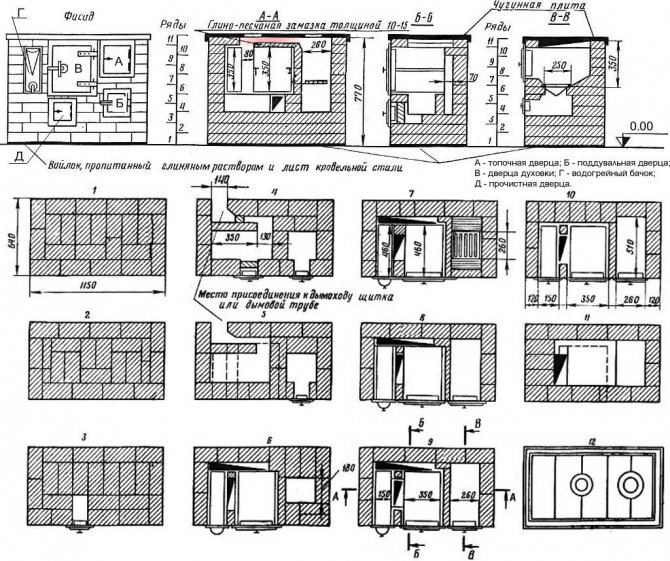

Drawings and ordering of a simple street oven
This design uses a technical solution first used in a Swedish stove: the firebox and smoke chamber are separated by an oven instead of a smoke tooth; the gas tunnel above it is highlighted in red. In such a stove structure, there is no room for a firewood, but instead:
- The oven mode stabilizes in almost any weather from early spring to late autumn.
- Thermal efficiency - over 65%, like a good cooking and heating oven.
- It is possible to use a chimney with a height of only 1.2 m above the level of the hob.
- The heating of the cooking zones is almost uniform and strong.
- The large smoke chamber is an efficient afterburner, which releases enough heat to heat the hot water tank.
- The loss of soot in the smoke chamber when burning with waste fuel is abundant.Therefore, the presence of a cleaning hatch with a door is necessary, but on the other hand, the oven mates with the smokehouse without any problems.
- The danger of burning from such a stove is not higher than from a Swedish stove or any other home stove. Therefore, this stove can be used as a brownie for a small room; then, instead of a smokehouse, it is constantly mated with a heating shield.
The laying of the improved outdoor slab is made on clay-cement mortar for outdoor stoves with moisture-resistant cutting of seams, see below. In the smoking mode, this stove is heated from a blower with the firebox door tightly closed. Fuel - shavings or thin splinters (not chips!) Of deciduous tree, except for birch, albeit perfectly healthy. Otherwise, the food will acquire a nasty birch tar flavor. Side exit to the chimney, in addition to the convenience of pairing with the smokehouse, excludes acid condensation in the oven.
Grill fireplace, barbecue and barbecue
Here in fig. given the order of a simple outdoor fireplace stove, which can be successfully used as a grill; stove bricks are marked in red, fireclay bricks are in orange. A tent over the hearth reduces the dependence of the quality of the prepared food on the weather conditions. Rows 1-12 make up a firewood, its height can be reduced to save material and work. The woodshed is covered with a reinforced concrete or stone slab 40-80 mm thick, on which the actual structure of the stove is being erected (rows 13-35). Row 25 along the façade is supported by a pair of 40 mm steel angle fixings.
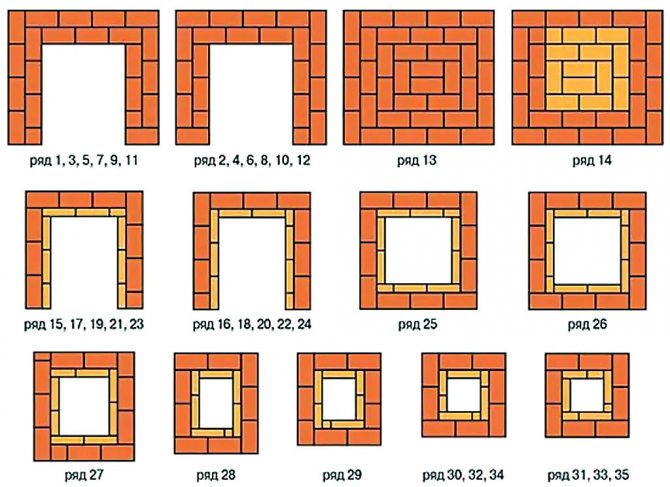

Ordering a simple outdoor fireplace stove
On the trail. fig. - ordering an outdoor barbecue oven (more precisely, a grill) with a hob. It is more complicated than the previous one, because arched portal of the furnace (rows 17-22). The arch is laid out in circles, as in the construction of a Russian stove. Such a barbecue oven will cost a lot cheaper than the previous one, because it has 8 rows of masonry less and fireclay bricks are not used. However, the possibilities of using this stove as a fireplace are very limited: the steel under the hearth from a regular firebox will burn out pretty soon. It will also not work to cook well done meat in this oven: due to the high thermal conductivity of the steel hearth, the coals will either go out too quickly, or, if you pile them in a thick layer, they will flare up and burn the product.
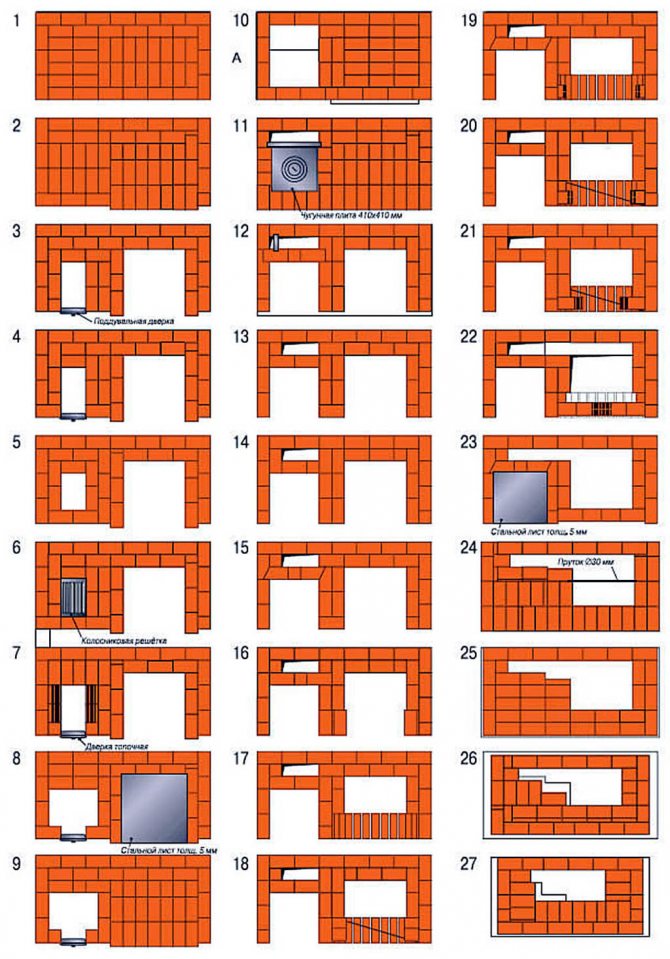

Ordering your outdoor barbecue oven
Finally, on the trail. fig. - a complex, expensive and time-consuming, but multifunctional and effective outdoor brazier oven with a 2-burner hob; yellow indicates clay-sand filling, as between the vault and the stove bench of the Russian stove. The upper smoke threshold (rows 15-20 in section BB) acts similarly to the smoke tooth of a classic English fireplace. In the niche between it and the portal (highlighted in pink), you can smoke products during other culinary processes: in order for acid condensate to fall out in such a pocket, you need to load the oven in completely disgusting weather with completely disgusting fuel.
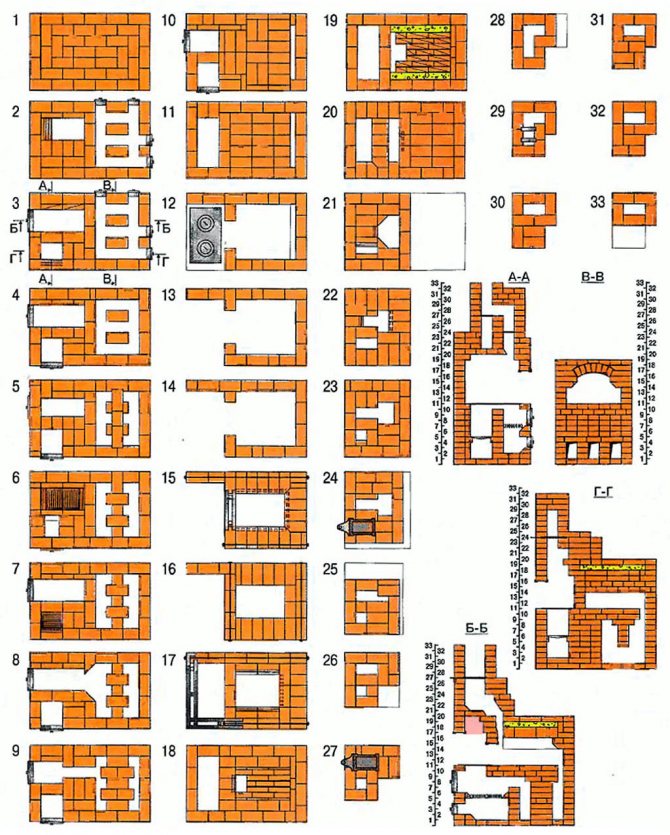

Ordering and drawings of an outdoor oven with barbecue
Criterias of choice


The stove must fit into the style of the interior, while heating the room at the same time
When choosing the right model, they are guided by a number of points that would allow:
- implement the conceived design solutions;
- effectively warm up all rooms in the house;
- to achieve comfortable conditions due to the high quality of the air environment.
The structure to be purchased must guarantee absolute fire safety.
The best professional convection ovens
For bars, cafes, restaurants and bakeries, they buy large, powerful and functional convection ovens. As a rule, they have many additional options, as well as fast baking of a large number of dishes.
Unox XEBC-16EU-EPR
5
★★★★★
editorial estimate
100%
buyers recommend this product
The professional convection oven has a high performance and can hold up to 16 trays 600 × 400 mm.It bakes in different modes, combining convection and steam at different temperatures. In addition, you can create your own oven operating modes (recipes) and even load photos of ready-made dishes into memory - there is enough memory for 256 of your own settings.
The model is equipped with a product temperature sensor and can be combined with other furnaces into a column with a single control. Unox has the highest degree of thermal protection, is energy efficient and is fireproof. The self-cleaning system with the use of detergents deserves special attention.
Advantages:
- Large capacity;
- Self-cleaning;
- Safety;
- Creation of automatic programs;
- Thermoprobe.
Disadvantages:
- Large dimensions.
The Unox XEBC Convection Steam Oven can be used in large bakeries, restaurants and other commercial catering establishments.
Rational CM 61 Plus
4.9
★★★★★
editorial estimate
93%
buyers recommend this product
The Rational CM 61 Plus is essentially a combi steamer. It bakes products with steam, hot air (convection) and a combination of these modes. At the same time, the heating temperature can be adjusted within the range of 30-300 degrees, and the steam - from 30 to 130 ° C. The combi steamer holds 6 1/1 GN containers (530x325 mm).
The Cool-Down option allows the oven to cool down in minutes. The stove has an internal cleaning shower, self-diagnosis of malfunctions and a descaling system.
The model is equipped with a food temperature probe and a fat separation function. The modern USB interface allows you to create up to 100 automatic baking programs by uploading a photo for each recipe to the menu.
Advantages:
- Cleaning system;
- Self-diagnosis of breakdowns;
- Powerful steam generator;
- Thermoprobe;
- The ability to create your own recipes.
Disadvantages:
- No grill.
The Rational Plus convection oven has everything you need for professional baking.
MAG-CO08D
4.8
★★★★★
editorial estimate
90%
buyers recommend this product
Oven convection oven MAG-CO08D can hold up to 8 trays 400x600 mm (not included in the package). It is equipped with a steam generator and has a high productivity - up to 32 kg of products per hour. Additionally, the model can be equipped with a proofing cabinet.
The model is equipped with a timer for 60 minutes. You can regulate the baking temperature in the range of 30-300 degrees, which will allow you to bake yeast and yeast-free dough, meat, fish, vegetable and any other dishes.
The furnace body has excellent thermal insulation, its doors are made of impact-resistant heat-resistant glass. This allows you to better maintain the temperature inside and protects against burns and overheating of surfaces outside. The oven has a built-in micro-switch that pauses the equipment when the door is open.
Advantages:
- Spaciousness and high performance;
- Steam generator;
- High degree of thermal protection;
- Temporary shutdown when the door is open.
Disadvantages:
- There is no core temperature probe to check the readiness of food.
The convection oven MAG-CO08D is suitable for catering places with a large flow of visitors and a typical menu.
How and where to order a barbecue oven
Today, the stove business in Russia is reviving, and the direction associated with the construction of street stoves is most actively developing. You can order a barbecue complex at Raslovo-Kladka, Russian School of Masters, SoyuzPlus, Studio Ferus, etc.) or from a private trader who is a member of the Russian or regional union of masters (Russian Stove Society, Moscow Guild pechnikov "and others).
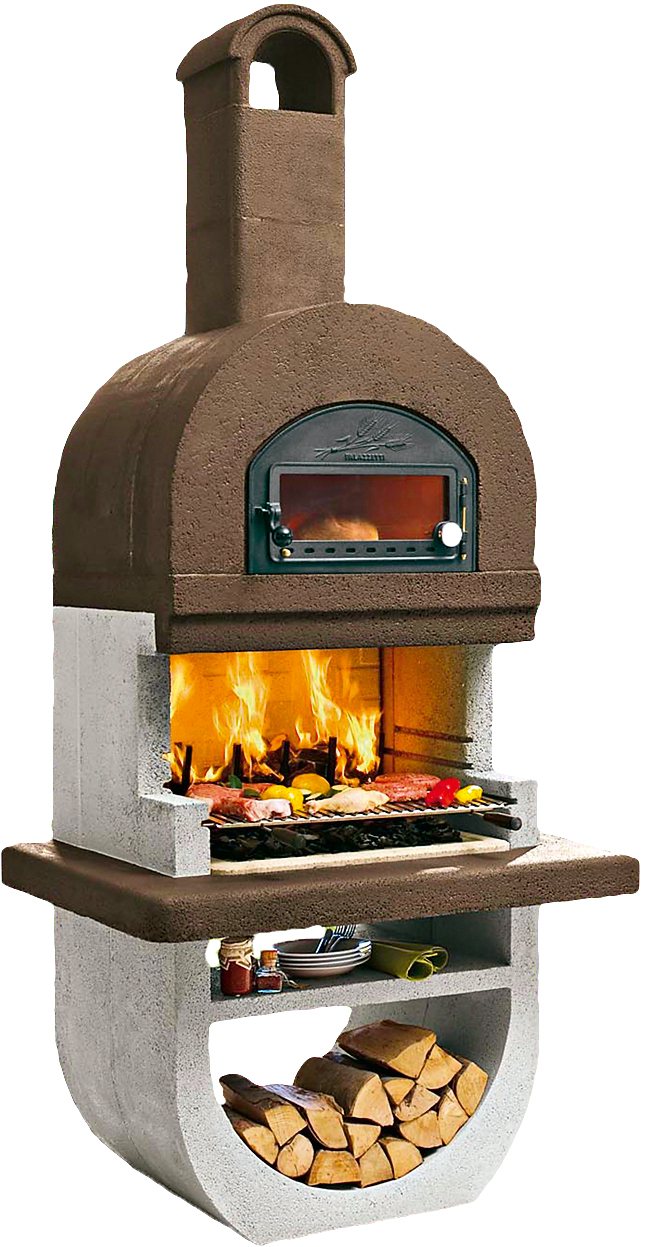

Concrete barbecues are afraid of hot flames, only units with a lined firebox can be heated with wood. Photo: Palazzetti
Modern design and engineering programs facilitate (and reduce the cost) individual design of the complex.Sometimes, having selected the necessary elements, you can immediately see how the finished furnace will look within the framework of one of the typical design solutions, and after a day or two, the master will receive the order.
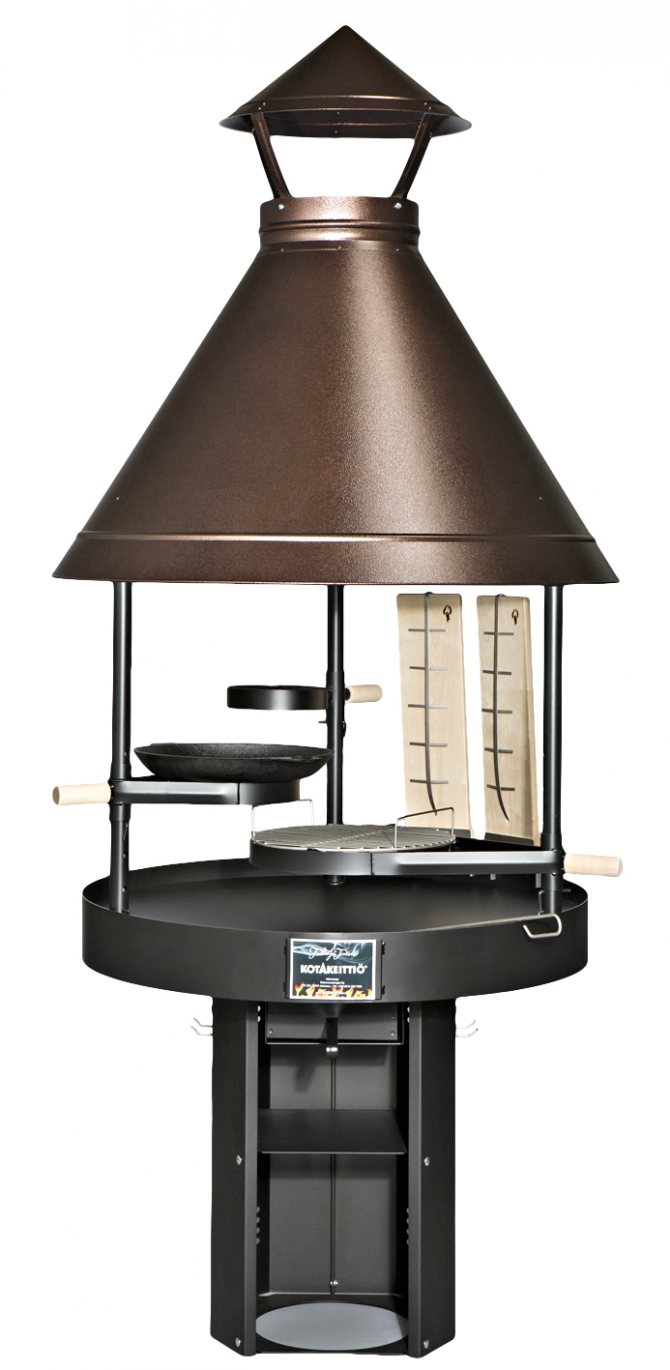

Metal grills and ovens are heat-resistant, but their design life is much shorter. Photo: Kotagrill
An important stage of communication with the contractor is the selection of materials. Today, stove-makers widely use not only traditional fireclay and red bricks, but also, for example, vermiculite concrete. Curvilinear concrete structures adorn the stove, but with individual design they increase its cost by 30–40%. If you combine brick with metal (the smoke collector hood and the chimney are easier to make from steel or copper than from concrete and brick), then you can slightly reduce the price of the complex, alas, losing in safety: it is easy to burn yourself on metal surfaces.
It is better to fold the curbstones that are not exposed to high temperatures from slotted facing bricks or expanded clay concrete blocks with subsequent plastering, fireboxes are made of fireclay bricks, smoke channels and chimney are made of solid red, and the outer walls are made of decorative. For countertops, ceramic granite or clinker tiles, natural stone (for example, marble), oak shields are suitable. But tiling vertical surfaces with tiles or stone is undesirable: in conditions of sudden changes in temperature and humidity, there is a high risk that such a finish will peel off over time.
Furnace doors, including those with glass, are sold ready-made. They are built into the masonry using embedded frames, around the perimeter of which a heat-resistant sealant is laid.
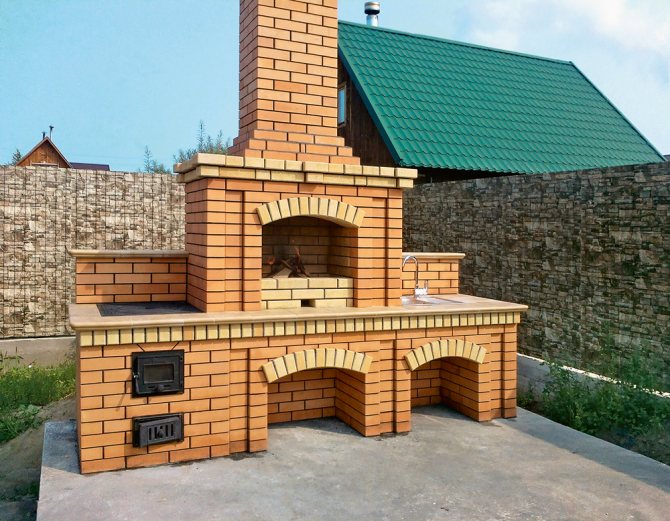

It is better to cover an openly standing brick oven for the winter, otherwise it will lose its attractive appearance in a few years. Photo: "Moscow Stove Workers"
Types of wood-fired kitchen stoves
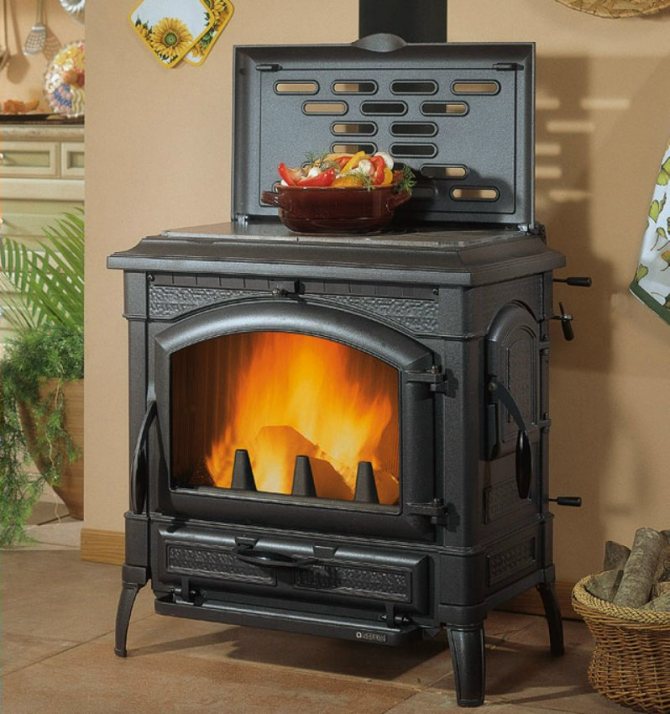

Wood-fired stoves are divided into cast iron and steel according to the material of manufacture, and according to their location in the room - into built-in, corner and freestanding. Their size can be very different, as well as the power, varying from 6 kW to 30 kW. Some models mainly perform the function of a hob, others allow not only to cook food, but also to heat the room, often combining this work with heating water for sanitary needs.
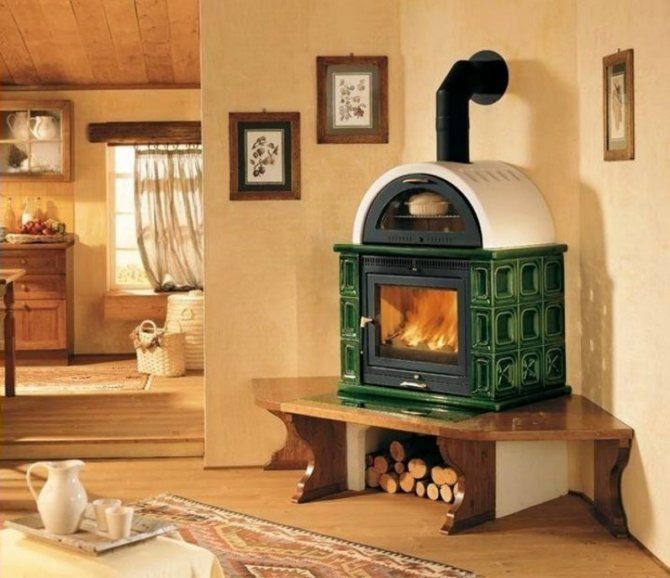

The smallest options for wood-burning kitchen stoves are narrow and tall fireplace stoves, with an oven in the upper part of the body, which makes them easy to install in very small spaces. The oversized wood-fired home stoves can combine a powerful fireplace with a domed oven, which is convenient for baking traditional country bread, so they are installed either in spacious kitchens, or in a patio or garden.
